Presence at the Edge of Our Practice
Humanity is in a time of transition, one that we can navigate successfully only with a shift in consciousness. How can we wake up from the collective neuroses that have driven our civilization into decadence and decline? How do we recover from the addictions that hold us in their thrall? In this article, I propose the perspective of practice as a pathway to liberation from destructive and reductive habits that is accessible to all and offer a preliminary overview of human practices for the 21st century.
One of the most potent invocations ever uttered by humans has to be the famous Chinese curse (and blessing) “May you live in interesting times.” No doubt, the times we are living in are hair-raisingly interesting and getting more so by the day. So much so that we really don’t know whether we—humanity as a species—are going to survive them. The dangers facing us and our fellow sojourners on ‘Space-Being Earth’ are by now so well known that I prefer not to dwell on them, saving space instead for unpacking more edifying ideas. Starting with the Good News.
This News is not new. We have instinctively and experientially known it, literally, forever—since the dawn of homo anything. Namely, that the Cosmos is a living, sentient entity of indescribable radiance, magnificence and numinosity, in which we participate as an inextricably entangled component, along with all of the rest of life (including that which we thoughtlessly assume to be inanimate). We knew this, however, back in the days when we still lived immersed in the oceanic womb of the Great Mother. That was before the evolutionary process ripped our consciousness free of its matrix (our expulsion from the ‘Garden of Eden’) and placed us in a relationship to the rest of life which has become pathological: in our newly self-conscious state, we succumbed to the urge to subjugate and control nature, in constant terror of being sucked back into the maw of unconsciousness and ‘barbarism.’[1]
For the past 5000 years or so, we- particularly in the Western world and all those places under the thrall of the Abrahamic religions[2]- have chosen to forget this knowledge of the inextricable Oneness of all things in favor of an absolute belief in the supremacy of man over nature, man over woman, mind over matter, reason over emotion. These days, the human rational intellect still assumes it reigns supreme, repressing and denying instinct and unconsciously projecting the repressed elements of the human psyche (both individual and collective) onto ‘the other.’ Herein lies our supreme peril. Few voices have articulated it more clearly or prophetically than Carl Gustav Jung, back in the first half of the 20th century. Jung recognized and warned of the danger—one that our civilization is still quite oblivious to—presented by the growing dissociation of the conscious ego from what he called the primordial or instinctual soul. He saw that the more we emphasized reason and the supremacy of the rational mind, the greater the danger that instinct—whose power we have failed to acknowledge or understand—would drive, possess, delude and overwhelm us, and the more we would fall victim to ideologies and utopian goals which could ultimately lead us to destroy ourselves.[3]
This danger springs from the failure to recognize and acknowledge that the conscious, rational mind of the human being, in both its individual and collective/cultural manifestations, sits like a lily pad atop a caldera of unconscious psychic material that is both unfathomably immense and inconceivably powerful. Our dawning understanding of the universe as a holographic phenomenon indicates that matter, energy, space, and time are not primary, as we have tended to assume. Rather, these are all different expressions of information.[4] One ramification of this is that the visible world is not the only dimension that is fully interconnected. The human conscious mind is a very, very thin, terrifyingly fragile layer of self-reflexive awareness that floats atop the species memories not only of homo everything, but of every single form of life (animal, vegetable, and mineral) that has evolved over the lifetime of planet Earth. We are talking here about the psychic imprints of patterns of behaviour that have endured for spans of time ranging from millennia to hundreds of millions of years. Habits, with a capital H.
We can perhaps most readily relate to this phenomenon through personal experience with our very own ‘triune’ brains. The reptilian brain has been around for some 500 million years, the mammalian brain for 200 million; the neocortical brain is the baby of the family, at around 1 million years. Not surprisingly, given hierarchy of age, the primordial reflexes governed by the older brain systems have far more influence on the neocortical brain than it has on them. How many times a day, in our stress-filled daily lives, are we drenched in adrenaline and cortisol as our instinctive fight-flight mechanism is triggered by a minor irritation or momentary overwhelm, even when there is no real danger in sight, and hasn’t been for years? Have you ever been swimming in the sea, glimpsed a shadow beneath you, and been instantly engulfed in primal terror of being devoured by a leviathan from the deep (and it was only a patch of seaweed…)? You were experiencing the millions-of-years-old programming of predator and prey. To quote Anne Baring:
Because these archaic instincts function at a deeply unconscious level we, who see ourselves as the summit of creation, may nevertheless be influenced, even controlled by habits formed during pre-human or early human phases of evolution. Fear of becoming prey can swiftly transform us into predators.[5]
While the neocortex has given us the capacity to reflect when we are confronted with a perceived threat, to allow ourselves time to decide how to respond, it is very rare that we actually do so. The reptilian brain springs into action so much faster than the neocortex! For all our amazing achievements as a species, we remain woefully clueless—as individuals and in most of the world’s surviving cultures—about our own psychology. As we go about our daily lives, we are for the most part blissfully unaware of the projections, assumptions, judgements, and inflations that we continually overlay on everything our senses encounter that we experience as ‘not me.’ The ramifications of this in the collective arena offer special cause for concern. As a result of our rather bloody history since the dawn of aforementioned self-reflective awareness (that history itself a reflection of this mechanism), the drive to conquer and control others before they conquer and control us has become embedded in instinctive patterns of response (a.k.a., habits) that, if we only stop to look, we can see everywhere around us in our modern society—especially and, most alarmingly, in our politics, economy, religion, and armed forces. What Jung prophesied has indeed come to pass, and we are not even aware of it. Mass insanity didn’t just break out during the World Wars, in Stalin’s Russia, in Rwanda, in Bosnia… It is happening all around us here and now. What else can explain our indifference to the starvation of children and our incapacity to care enough about the despoliation of our beautiful planetary home to come to our collective senses and stop it? Our species has effectively been collectively possessed by the will to power of the more shadowy aspects of what Jung named the collective unconscious.
So here we are. On the one hand, we have the intellectual understanding, backed up by compelling scientific evidence, of the sublime oneness of creation, and the potential that this opens up for an enlightened human culture and civilization. On the other, we are literally surrounded by the bleak evidence of the power of the instinctual trauma that has our entire civilization so thoroughly in its grip that we are careening toward destruction without any capacity to engage our conscious will and change course. Many are the voices that proclaim impending salvation—sometimes for the chosen few (the ‘rapture’) and sometimes for all humanity (our comfortable conviction that technology will save us at the eleventh hour). And yet here we still are, contending with ever more extreme polarization, violent conflict, and existential threat, all amped up by the machinations of power-hungry politicians and profit-hungry corporations, and the fear-mongering of the mainstream media channels that so firmly anchor the collective attention on the worst in human nature. To deaden the pain of such horror, the current mainstream practice is to seek distraction in addiction, be it to mind and mood altering substances, to work, to entertainment, to the acquisition and consumption of material goods…our addictions are legion!
Please note my choice, in the previous sentence, of the word practice. If salvation there be for the human race, I believe it lies in the humble notion of practice. The Oxford English dictionary offers three definitions of the term:
(1) the actual application or use of an idea, belief, or method, as opposed to theories relating to it (synonyms: application, use)
(2) the customary, habitual, or expected procedure or way of doing of something (synonym: custom)
(3) repeated exercise in or performance of an activity or skill so as to acquire or maintain proficiency in it (synonym: training)
In the sentence at hand, the operative definition is (2). Revisiting my assessment of the peril and the promise that beset us in these days, the unconscious trance state currently driving us over the cliff is maintained through the cultural, social, and economic customs of Western civilization as they spread across the globe.
The bridge to the “More Beautiful World our hearts know is possible”[6] lies in actually applying the best of human knowledge- all that we know to be true about depth psychology, healthy living, wise governance, nurturing and empowering education, regenerative farming, and so on (definition 1); through persistent, repeated, intentional individual and collective exercise in the requisite methods until we acquire proficiency in them (definition 3). This is how old habits (definition 2) are broken and new ones instilled. This is how we move from our current preconscious state toward becoming a species composed of awake, aware, responsive and responsible, self-actualized, and unique individuals who also have developed a capacity to participate in the collective consciousness that, too, is part of our potential as humans.[7]
I see practice, then, as a royal road to manifesting a balanced and healthy new paradigm in our culture- a bridge to liberation from so much of what ails us. When we first come to practice, or are invited to experience the practices of others, these often feel unfamiliar, uncomfortable and unnatural. That’s not surprising: their whole purpose is to break old habits and instill new ones that help us to experience and embody a very different evolutionary trajectory for homo sapiens—beyond mere dreams of peaceful coexistence—as healthy and generative participants in the dance of life on Earth.
This focus on practice is one of the hallmarks of the emergent exemplars of what I call Aquarian Patterns (patterns underlying the embryonic new civilization). It is an immensely rich and complex domain and, in this article, I must content myself with giving a preliminary overview. As I sense into these patterns in my own life and experience (something I have been doing for over 20 years now), the framework that has given me the broadest and most explicit practical overview of the potential offered by intentional practice is the ‘Fourfold Practice’ that describes the DNA of the Art of Hosting Conversations that Matter.[8] I feel that this is a particularly fruitful domain to offer as an example of practice because it concerns the art of being together in a generative and co-creative way, one which can hold us well in our interactions as we apply all the other practices needed to build the ark of a new civilization where all life can thrive.
The Stance of the Practitioner
My rather intense engagement with the practices of the Art of Hosting and its community of practitioners over the past 12 years has brought me to recognize the power and potential of the ‘stance of the practitioner:’ practice is not a boring chore, but a sacred troth—a commitment to ourselves, to those we serve by hosting them, to each other as a community of practice, to the world at large, and to the practices themselves. Stepping from the autopilot of everyday consciousness into practice is like stepping into the dojo of the martial arts. We leave our shoes (and socks!) at the door and as we step onto the mat, we bow to the practice, to the teachers, and to our fellow practitioners. Whatever the field of practice, this is Sacred Space and we are in Sacred Work together.
The Fourfold Practice[9] is so named for its four ‘domains’ of practice: the inner practices of ‘hosting the self into presence’; the relational practices of ‘participating and being hosted’; the leadership practices of ‘hosting others in conversations that invite presence’; and the collective practices of ‘co-creating in community.’ All four of these domains of practice are based on the core practice of ‘holding space’—an active, energetic process of deep presence, listening, and mindfulness that is at the heart of intentional manifestation. All four also are firmly rooted in the ground of continual learning, both individual and collective. There is no end to what becomes possible if we stay open and humble enough to keep learning!
Unpacking each of these domains, we can see that there is such a great variety of practices that no one need go hungry. Living a healthy and balanced life means adopting a variety of practices in each of these domains. The idea is not to bolt these practices onto our daily lives as extra things to do (the last thing we need is more busyness!), but rather to shift our lives gradually until we live them through our practices.
Hosting the Self into Presence
Living well in a participatory universe is the art of being. Being requires presence—that quality of authenticity, vulnerability, confidence, and courage, which comes from deep personal work that cannot be done in isolation. Presence is a holistic, emergent quality incorporating physical, mental, emotional, and spiritual dimensions. Presence is what allows us to stand in the midst of intense emotion, to tolerate chaos without rushing to fix anything, to be comfortable with the silence and stillness of non-doing, to work in service of a purpose bigger than personal ego.
Hosting self is the practice domain of holding space for the emergence of presence. On a physical level, it involves listening to your body, nourishing it with pure, clean, natural food and water, getting adequate rest and exercise, and managing stress. On a mental level, it cultivates an open mind free of habitual patterns of thinking and unconscious beliefs and assumptions. On an emotional level, it learns to recognize what triggers habitual emotional reactions, heal the underlying trauma and develop new ways of embodying and expressing emotion in general. It also helps us to own our expectations and projections and to cope with anxiety and uncertainty. It nurtures self-compassion and a willingness to take risks, and it enables us to be comfortable with so-called mistakes and failures and learn from them. On a spiritual level, hosting oneself connects us with the unseen world of energy and spirit, reduces attachment to ego, and frees us to work through the heart with compassion and without the need to be in control. It supports us in embracing solitude and silence and a connection to the natural world. Presence cannot be manufactured or forced, or even developed. It is the natural emergent quality available when we gently recognize and remove barriers in a self-reinforcing cycle of holding space for presence which allows for deeper holding of space and deeper presence.
There is no set of specific approved or recommended practices for hosting oneself. Every practitioner must find his/her own practices for letting go of control and holding space for presence to emerge. These practices could include yoga, dance, martial arts, meditation, contemplative writing, prayer, psychotherapy, time in nature, solitude, tantric sex, art, music… the list is endless. The importance is finding a set of practices that increase your personal capacity for presence and then to commit to regular practice. We have found it most helpful to ground any and all practice in an inner state of gratitude, awe, curiosity, and love.
Participating and Being Hosted
With the presence which arises from hosting the self, we are ready to participate. On one level, this means engaging in activities with others and allowing yourself to be led. As your practice of participating deepens, it can evolve into a participation with all of life. At that level, participation becomes an intense immersion in what is, without expectations and without a desire to attain any particular outcome. It is about showing up with your full self and your own interests and predilections whilst sensing what wants to happen and discerning how to align yourself and your interests in service of a larger purpose. Participating fully requires trust and letting go of control. It invites a depth of communion in which silence is a welcome participant and in which connection and communication transcend spoken words and include nonverbal and energetic components. Participation is an invitation into the unknown, an opening to being changed, a willingness to step into the field from which emergence is possible.
In human society, participation frequently manifests through conversation[10], and conversation is an art. It is not just talk. It demands the presence to listen carefully to one another, to nature, and to the unseen. It demands silence as well as words. It demands that we offer what we can in service of the whole, speaking with deep intention while listening with rapt attention. Life-affirming participation flows from a mood of curiosity, recognising that curiosity and judgment cannot live together in the same space. If we are judging what we are hearing we cannot be curious about the outcome, and it will be difficult for the conversation to move beyond defending preconceived positions. Skillful participation in conversation requires an open mind, open heart, and open will. It calls for mindfulness and the ability to slow a conversation down to allow deeper listening and clarity to arise.
Practices within the domain of participation include active listening; dialogue; asking powerful questions; owning one’s own projections, expectations and assumptions; clarifying intentions; cultivating a mood of curiosity and openness and listening to nature. It is clear at a glance that many of these practices are a complex world in themselves- there is no danger of getting bored!
Hosting Others into Presence
As we transition from the prevailing paradigm of the ‘leader as hero’ to the emerging ‘peer-to-peer’ paradigm, the conversational ‘leader as host’[11] creates and holds a container in which people can do their best work together. This holding of space involves sensing the conditions that will allow a group to settle into collective presence, holding that space through chaos so that new order and clarity can emerge. Such conversations do not just happen, they are the product of clear intentions, a powerful calling question, a compelling invitation, good design, skillful framing of the context and the holding of space in which the work can be done, and, most of all, the presence to hold space for emergence. All of these are practices and skills of hosting conversations.
Initially, hosting is likely to consist of mastering a set of core methodologies.[12] In time, the practice calls for increasing depth of presence to be able to hold space for deeper or more challenging conversation. As our capacity deepens, the practice also includes more subtle aspects including preparation of the physical space; invitation and welcoming; and working with the energy of the group. While much of the attention of hosting is focused on the external work—the actions—an equally important aspect of hosting practice is to attend to one’s inner state and learning. Hosting inevitably challenges us at our growing edge, whether that lies in relinquishing control, feeling competent and adequate as a member of a hosting team (hosts are admonished never to work alone!), finding the right language to invite deeper participation, or accessing the courage to touch in on the collective wounds often festering under the surface. A practitioner of hosting is engaged in both the internal and external practices. While very few practices are best done alone (even meditation benefits from a collective field), it is particularly important to work in a team when hosting.
Co-creating in Community
It is one thing to learn new skills and practices in an environment specifically designed to be conducive to learning. But what then? In order to be able apply our learning in our daily lives, to sustain our learning and keep our practice alive and growing, we need to stay connected to other practitioners. The traditional way of addressing such challenges is to create an organisation or association and to follow the wisdom of the experts. But in a context of emergent social transformation, this approach doesn’t work. The shared knowledge springs from collaboration and conversation, and is not in the possession of an expert. There are no rules, no formulae, no formal requirements for doing this work. Life is inviting us to innovate, to collaborate, to discover new models and processes that can serve humanity in our collective journey into the unknown future. Yet there also is a need to recognize and protect the essential DNA of any novel body of work that develops a community of practitioners—there is a constant danger that the practice will be sucked into the miasma of old habits and warped out of shape by prevailing thought forms. Each one of us can benefit from learning from practitioners with more experience and deeper realization. What guidelines and agreements can help a community of practitioners to participate together?
The Art of Hosting community can be illustrative of how such communities can emerge. Over a span of 20 years, it has grown from a few friends sharing ideas together, to a globe-spanning self-organising network with over ten thousand members and a steadily evolving core body of practice accessible to all. This has unfolded, quite deliberately, without any licensing or copyrighting, without any organisational structure, staff or headquarters, without any specific financial expectations or agreements, and without any explicit governance. Over time, a group of more experienced practitioners has emerged who are recognized as stewarding the DNA of these practices, and practitioners come together periodically at open gatherings (one of our guidelines is “whoever shows up are the right people”[13]) to sense into the needs of the community and make any necessary collective decisions. Newer practitioners are encouraged to apprentice to the more experienced and one of the few ‘rules’ within the community of practice is that there needs to be a ‘steward’ involved in any Art of Hosting training. This has provided a framework in which practitioners can learn and develop their capacity while also protecting the deeper patterns and essence of our shared practice. What has also emerged is an online platform for communicating and for collecting and disseminating learning, models, materials, and other artifacts of our learning.
This community of practice pattern has emerged regionally throughout the world in response to local needs and circumstances, and while it doesn’t look the same everywhere, there are many shared elements. The beauty of this fourth domain of practice is that we are all learning together to hold the space for learning together, and for the ongoing emergence of our practices in response to the needs of our changing world. Like so much within the Art of Hosting, this is fractal. The success of our community lies in our systematic engagement with our practices in all four domains. As we learn together, we also are confronted with our blind spots and those parts of our practice that are less skillful or conscious. This provides an opportunity for us individually and collectively to increase our capacity through hosting ourselves. Thus, the Fourfold Practice is an iterative cycle leading to deeper practice and ever-increasing capacity.
In conclusion, my sense is that the practices which will best help us navigate the growing complexity of these transitional times are grounded in the heart. It is the instinctive intelligence of the heart that most thoroughly connects us to ourselves, each other, and all that is. Let us share the core practice of inhabiting the gentle energy of heart-centred awareness as we step into the dojo of our lives. Let us do so in the understanding that this is not the culmination of our journey; rather, it is simply the work that is needed to reach the starting point for the next great adventure: developing our capacity to consciously and intentionally participate in the cosmic processes of co-creative manifestation. This calls for clearing away the debris and drama of our collective ‘story so far,’ learning through heartfelt practice to process and, hence, traverse our existential fears, thereby restoring for ourselves a soul space in which to choose other ways of being, other paths into a future of utterly astonishing potential.
References
[1] This understanding/interpretation is based on the ‘mainstream’ assumptions about the history of homo sapiens. Less widely-known evidence suggests that an earlier global high civilization was wiped out by a cataclysm some 11, 500 years ago, which imprinted massive trauma into our species memory. Barbara Hand Clow, Awakening the Planetary Mind (2011).
[2] With the strong exception of the mystical strands of those religions!
[3] Adapted from The Dream of the Cosmos, by Anne Baring. Archive Publishing, 2013.
[4] The Cosmic Hologram, Jude Currivan. Inner Traditions, 2017.
[5] The Dream of the Cosmos, Anne Baring.
[6] Grateful to Charles Eisenstein for this powerfully evocative phrase.
[7] See also the series of Kosmos articles (2012-13) on Collective Presencing co-authored with Ria Baeck.
[8] See my article in the 2016 spring/summer edition of Kosmos Journal.
[9] This section on the Fourfold Practice is adapted from the Companion Guide to the Art of Hosting compiled by Steve Ryman and myself in early 2016. My gratitude to Steve, who was the main author of that section. [Where is the Companion Guide published (book, article, website…)?]It isn’t openly available to the public.
[10] In essence, our entire cultural manifestation is a conversation, one which has become ever more global, intense, and polarized through our use of information technologies—hence, the importance and potential of developing our conversational capacity!
[11] See also http://www.margaretwheatley.com/articles/Leadership-in-Age-of-Complexity.pdf
[12] Such methodologies include Circle, Open Space Technology, The World Café, Appreciative Inquiry, etc.
[13] Borrowed from the practice of Open Space Technology.


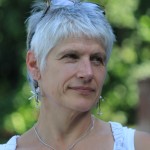
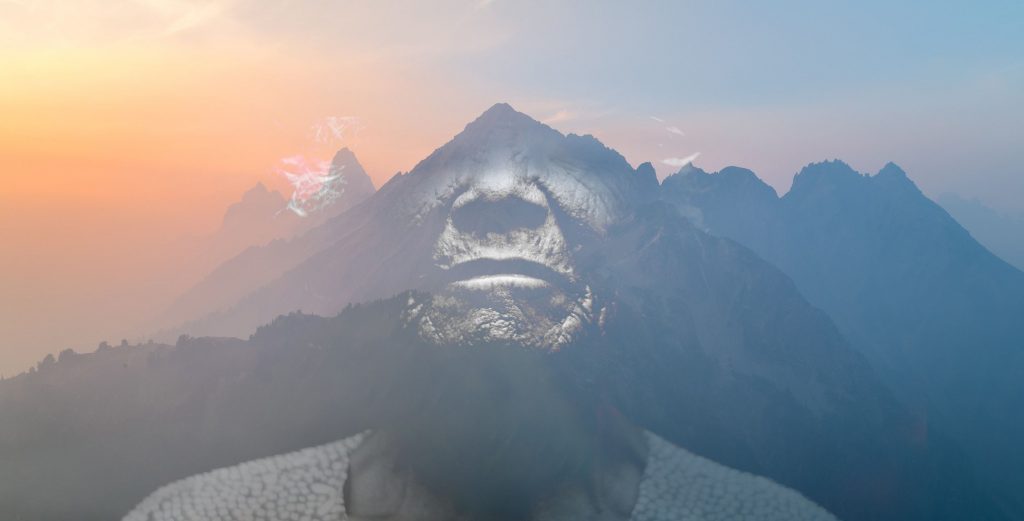
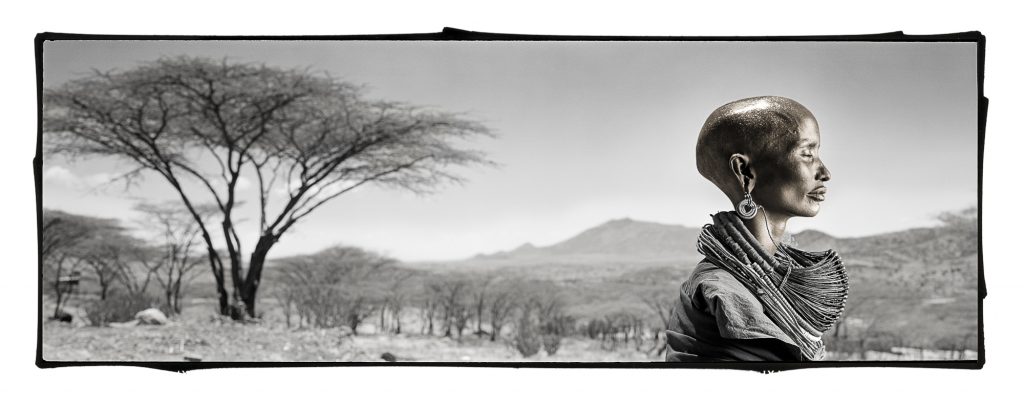
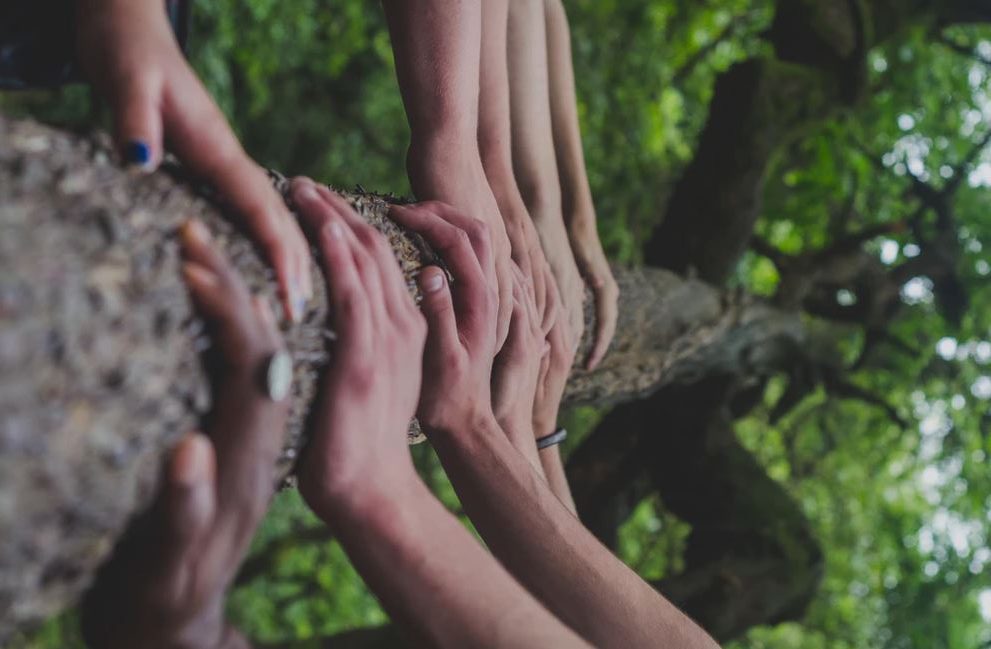
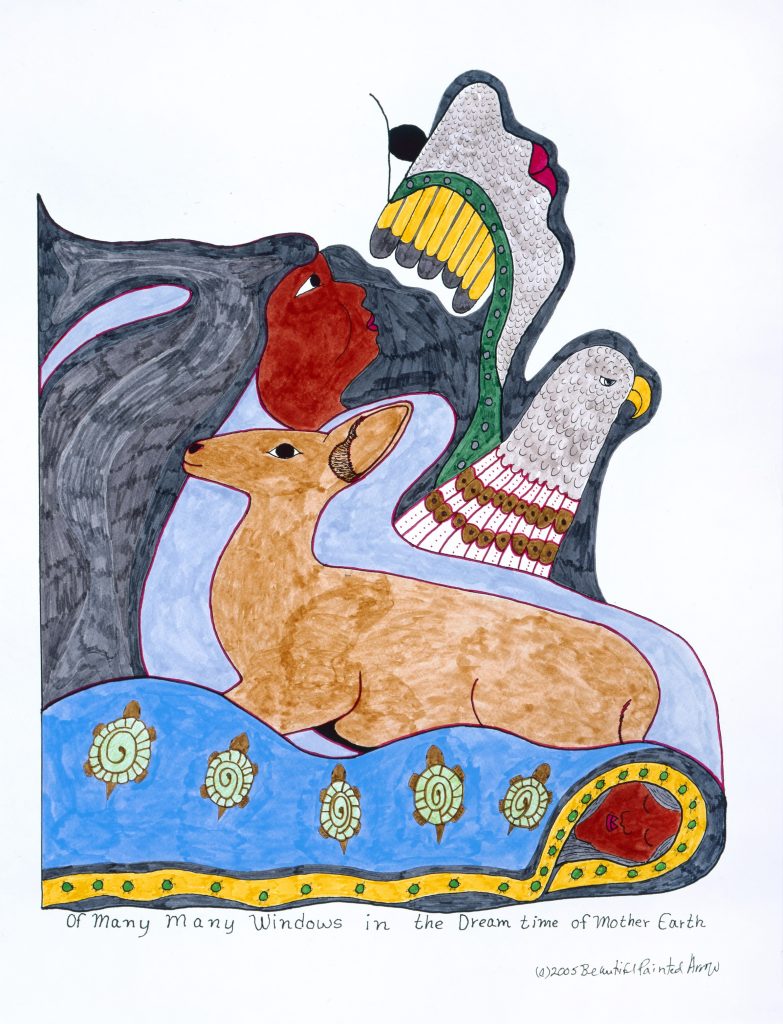
The unifying principles of this work are imperative for the collective mind of humans to embrace. In our current social structure in the U.S.-as I experience through the lens of the younger members of my family, there seems to be a push towards divisiveness through concepts such as cultural appropriation and mapping of our D.N.A. in order to know to who are ancestors are-and whose culture we may partake of. When my niece and I were talking about our spiritual practices, she expressed the notion that white people are not allowed to use words like ‘spirit animal’ because they do not belong to anyone but the native Americans. It was difficult to stay in deep listening because I felt this concept to be divisive. I could not elicit her definition of what anyone was taking away from a culture (culture appropriation) by defining a spiritual experience in terms of a cultural paradigm we did not grow up with, but rather learned to respect and understand as an experience we share. My heart really feels the connection with all of humanity and I prefer to embrace a common ‘ancestor’ rather than the divisive concept that cultures/spiritual practices of groups that have experienced trauma at the hands of white colonialists are unavailable to those with white skins. It seems to me that spiritual practice is a unifying experience based on love and respect. I would love to hear from some younger folks about this idea. Could we start a conversation?
I can’t believe I have only just seen your comment, Jill! My apologies for being slow on the uptake. What you evoke is a phenomenon that I am painfully aware of. I understand it as a way in which our (collective) trauma is being appropriated in the misguided identity politics that keep us attached to our victimhood. There is no way of denying the damage that the Europeans have done in their colonial and imperial adventures. Or that mankind in our deficient mental-rational consciousness have perpetrated on the rest of the tissue of the living world during the ‘era of patriarchy’. Or that we have always been and remain ‘part of nature’, functioning through the dictates of our nature in an ever-shifting dance with the rest of creation. It’s COMPLEX and I would love to start a conversation about it all!